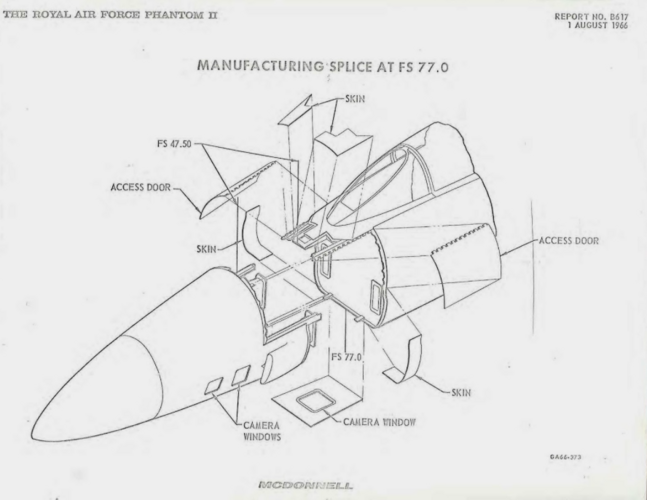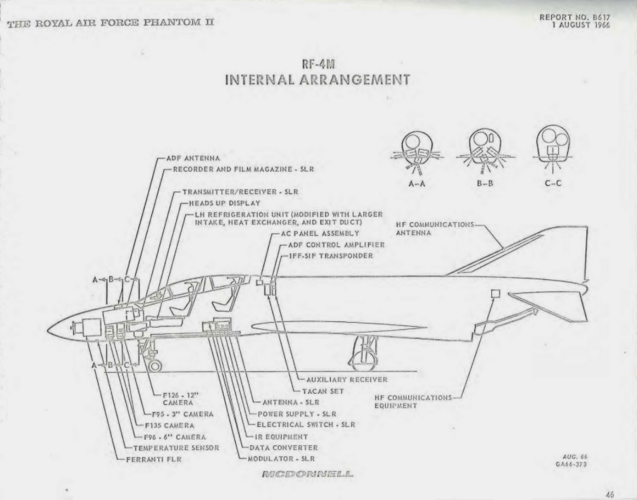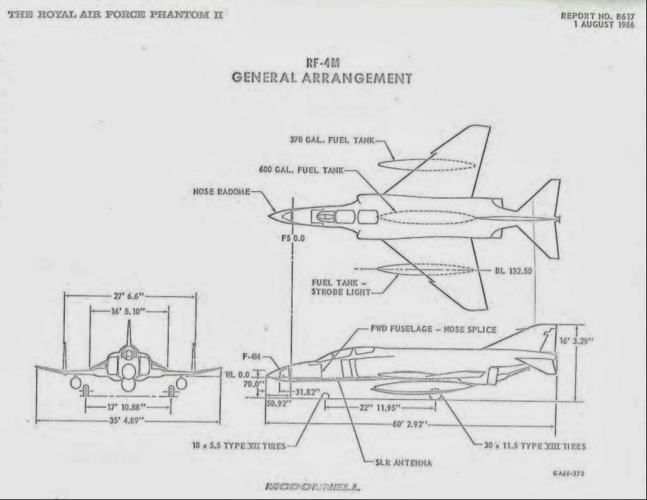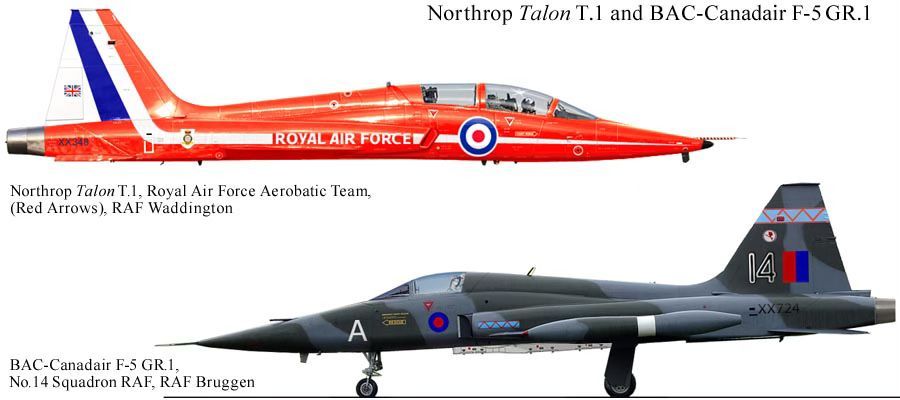For years I have wondered why the RAF procured two aircraft types with essentially the same nav-attack capability but delivered through different inertial platforms and other back-end sub-systems - question answered, thank you. The other advantage, though I have no idea of the extent to which it was used, of the LRMTS was the ability to engage targets marked with the ground-based laser target marker, theoretically giving an almost direct link between a ground unit and the aircraft's nav-attack system. Ideally, LRMTS would work alongside a radar, as eventually happened on Tornado. Across various pilot comments and official documents it seems that the Jaguar/Harrier had the edge in daylight+good weather CAS but the F-4M took it in Interdiction, Offensive Counter-Air and any scenario with degraded visibility.
I am curious about Mintech's views on radar availability. McDonnell offered the Ferranti FLR as part of its RF-4M proposal in 1966 (images attached). It wasn't a particularly massive system by the standards of the day and by the end of the TSR-2 programme it seems to have been fairly mature, albeit with a few kinks to be resolved. A pairing of the Ferranti FLR with LRMTS, in an expanded INAS, could have been a highly effective solution for the 1970s and recovered a small portion of the sunk cost from TSR-2. The limited volume in the as-built Jaguar may have been a prohibitive though and I wonder at what point pilot workload would become excessive.
Perhaps drifting too far down an alternative history rabbit hole, a bigger Jaguar, with even bigger wings, more power (perhaps jumping to a pair of RB.153s) and the aforementioned hypothetical Ferranti FLR+LRMTS INAS could have been a superlative 1970s and 1980s all-weather attack aircraft. Another way of thinking of it is as a smaller, and single seat,
Blackburn P.141. No complex and expensive variable geometry and real-world sunk cost engines and nav-attack sub-systems. Something that had a go-decision been made in 1965 could have been in-service in the early 1970s?




